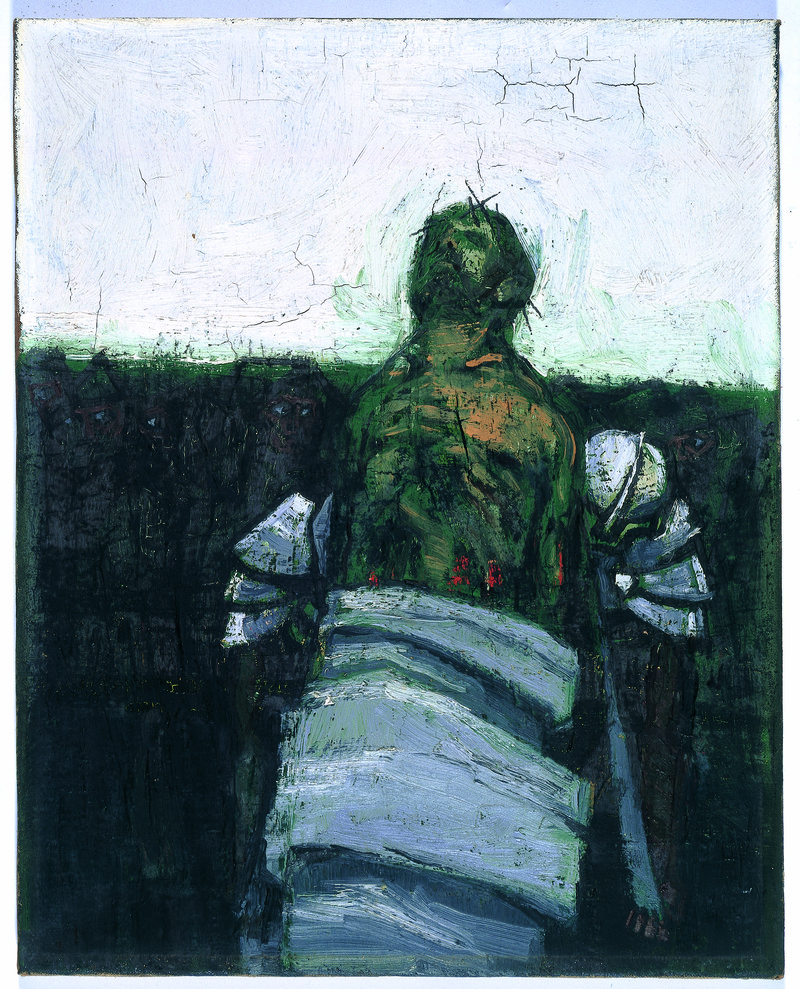
Philip le Bas (1925- )
Oil on canvas
58 x 50 cm
1962
Methodist Modern Art Collection
LeB/1962
Image Copyright © Trustees for Methodist Church Purposes. The Methodist Church Registered Charity no. 1132208
Biblical commentary
Matthew 27: 27–28
Jesus stands upright, naked to the waist with a white cloth from the waist down. A soldier in armour stands behind him on his left, with his head and helmet bent forward as he strips him, whilst Jesus looks towards a distant horizon. Writing shortly after completing the painting, Le Bas said, ‘I have tried to show, without sentiment, the sufferings of a man, as I feel in this way the average person will come closer to realizing what agony and loneliness Christ must have endured.’
Commentary based on A Guide to the Methodist Art Collection.